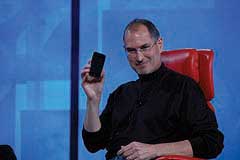This is “Power and Politics”, chapter 13 from the book An Introduction to Organizational Behavior (v. 1.0). For details on it (including licensing), click here.
For more information on the source of this book, or why it is available for free, please see the project's home page. You can browse or download additional books there. To download a .zip file containing this book to use offline, simply click here.
Chapter 13 Power and Politics
Learning Objectives
After reading this chapter, you should be able to do the following:
- Understand the meaning of power.
- Recognize the positive and negative aspects of power and influence.
- Recognize the sources of power.
- Understand and recognize influence tactics and impression management.
- Learn the definition of a social network and how to analyze your own network.
- Understand the antecedents and consequences of organizational politics.
- Understand how ethics affect power.
- Understand cross-cultural influences on power use.
Focus on Power—The Case of Steve Jobs
On November 27, 2007, Fortune named Steve Jobs the most powerful person in business. The CEO of Apple Inc. has transformed no fewer than five different industries: computers, Hollywood movies, music, retailing, and wireless phones. His Apple II ushered in the personal computer era in 1977, and the graphical interface of the Macintosh in 1984 set the standard that all other PCs emulated. His company Pixar defined the computer-animated feature film. The iPod, iTunes, and iPhone revolutionized how we listen to music, how we pay for and receive all types of digital content, and what we expect of a mobile phone.
How has Jobs done it? As we’ll see in this chapter, Jobs draws on all six types of power: expert, legitimate, reward, referent, information, and coercive. His vision and sheer force of will helped him succeed as a young unknown. But the same determination that helps him succeed has a darker side—an autocracy and drive for perfection that can make him tyrannical. Forcefulness is helpful when tackling large, intractable problems, says Stanford social psychologist Roderick Kramer, who calls Jobs one of the “great intimidators.” Jobs has been known to berate people to the point of tears, but at the same time, “He inspires astounding effort and creativity from his people.”
Employee Andy Herzfeld, the lead designer of the original Mac operating system, says Jobs imbues employees with a “messianic zeal” and can make them feel that they’re working on the greatest product in the world. But at the same time, Jobs is very hard to please, so Apple employees work hard to win his approval. “He has the ability to pull the best out of people,” says Cordell Ratzlaff, who worked closely with Jobs on OS X for 18 months. “I learned a tremendous amount from him.” Jobs’s ability to persuade and influence has come to be called a “reality distortion field.” As Bud Tribble put it, “In his presence, reality is malleable. He can convince anyone of practically anything.” Hertzfeld describes his style as “a confounding mélange of a charismatic rhetorical style, an indomitable will, and an eagerness to bend any fact to fit the purpose at hand.” The influence works even when you’re aware of it, and it works even on “enemies”: “No other high-tech impresario could walk into the annual sales meeting of one of his fiercest rivals and get a standing ovation,” which is what Jobs got in 2002 from Intel Corporation (the ally of Apple archrival Microsoft in the partnership known as Wintel: Windows + Intel).
Jobs’s power is not infallible—he was ousted from his own company in 1987 by the man he hired to help him run it—but he was brought back in 1997. The only years that Apple was unprofitable were the years during Jobs’s absence. Many are watching to see how Apple runs without Jobs who took a 6-month leave of absence in early 2009.
Sources: Schlender, B. (2007, November 27). The power of Steve Jobs. Fortune, 117–118; Sutton, R. (2007). The no asshole rule. New York: Warner Business Books; Kahney, L. (2008, March 18). How Apple got everything right by doing everything wrong. Wired. Retrieved January 4, 2008, from http://www.wired.com/techbiz/it/magazine/16-04/bz_apple; Hertzfeld, A. (1981, February). Reality distortion field. Retrieved January 4, 2008, from http://folklore.org/StoryView.py?story=Reality_Distortion_Field.txt.
Video Connection
If you are interested in learning more about Steve Jobs as he describes pivotal moments in his life, view Steve Jobs’s commencement speech at Stanford in 2005, available at the following Web site: http://www.youtube.com/watch?v=UF8uR6Z6KLc





